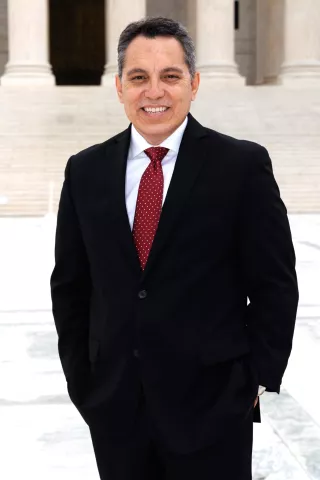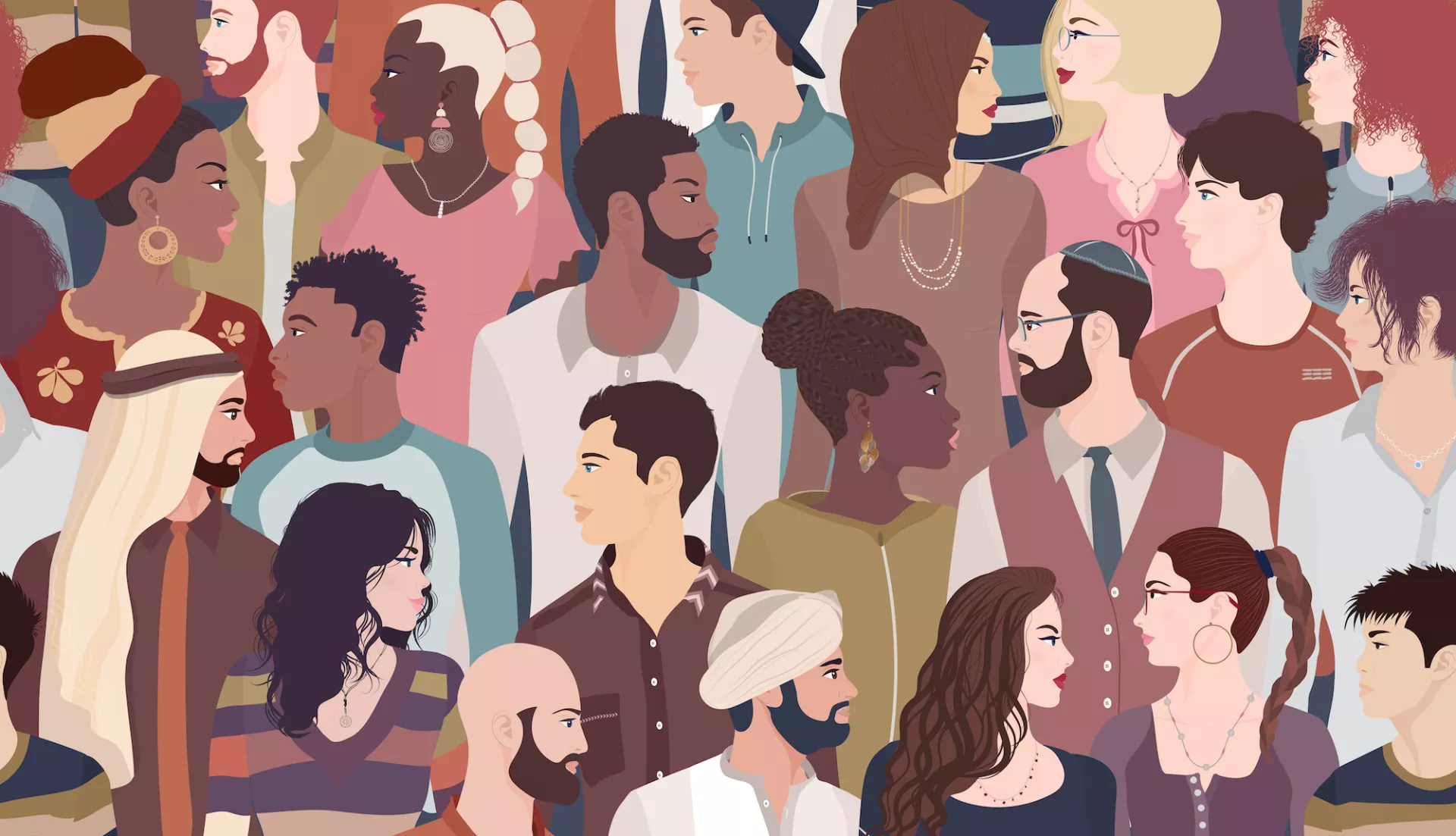[Editor's note: This Q&A was originally published on June 18. On June 20, in a 6-3 ruling, the Supreme Court curtailed affirmative action in college admissions, rejecting admissions programs that considered race among other factors. "For too long, color-coded barriers have been used to prevent Black, brown, and Indigenous people from accessing the opportunities we all deserve and seek to achieve our dreams. With this decision, the Supreme Court has reinforced those barriers," said NEA President Becky Pringle. "Racism and discrimination are not just artifacts of American history but continue to persist in our society, including our schools, colleges, and universities."]
On October 31, 2022, David Hinojosa stood before U.S. Supreme Court justices, representing University of North Carolina (UNC) students defending affirmative action in the case of Students for Fair Admissions, Inc. (SFFA) v. UNC. Today, he eagerly awaits the court’s ruling. In a recent conversation with NEA Today, Hinojosa, director of the Educational Opportunities Project at the Lawyers’ Committee for Civil Rights Under Law, explains how affirmative action is essential to ensuring all students can succeed in a diverse and interdependent world.
Let’s talk about how you got into this work. What motivates you to represent students of color and students in at-risk circumstances?
There is an insatiable desire in me to do whatever I can to help ensure every child has a meaningful opportunity to reach their full potential in school and in life. We talk about education being the great equalizer—and yet, access to quality education is largely dependent on your zip code, your economic status, your language status, and your race. This is the land of opportunity and yet, so many have been—and continue to be—denied that opportunity.
It's also reflective of my own experiences, growing up as a student of color. I identify as Mexican American and I grew up largely in San Antonio, Texas, in one of the poorest property-wealth districts in the states. I recall seeing other students [in high school] competitions, seeing the great opportunities they had, from course work to facilities, they had much greater tools, and I’ve carried that with me. I know people might say ‘you went to college, and you went to law school, look at you now.’ But I’m an exception without being exceptional. So many exceptional kids I went to school with didn’t have those opportunities and probably never reached their full potential.
I was at the University of Texas law school when affirmative action was banned, and we went from 72 Hispanic law students to 26. That’s in a class of roughly 400. We went from 40-plus Black students to four. Four! Meanwhile, African American students make up 12-14 percent of high school graduates in Texas. So, I know what potential losses lurk if we don’t stand up sooner for what’s right. That definitely drives me.
Opportunities for students of color would certainly be lost if affirmative action were to be banned. What else would happen on campuses?
I will say that history shows that affirmative action bans in states across the U.S. have been followed with significant drops in the enrollment of students of color, but we're not gonna let that happen. We're going to push forward a comprehensive set of reforms that will ensure all students continue to have access to our more selective universities. And it's important for America to understand that the loss isn’t just for individual students who could be potentially excluded—it’s for all students. Cross-racial relationships and dialogues, for example benefit all people and we want to ensure those are furthered beyond a decision in the cases.
When you appeared before the court last year to defend affirmative action, on behalf of the student intervenors at UNC, what did you say?

We wanted to get across to the justices the voices and experiences of students. Of all the cases that have reached the Supreme Court, we were the first to present oral argument in defense of affirmative action on behalf of students, so we knew we were a singular—and powerful—voice; and not just for students but for the civil rights community. So, we shared what students see on campus, their experiences with racial bias and discrimination, the KKK marches, the racist graffiti that one of our clients described on the walls across the UNC campus. And how these experiences would likely be worsened with the loss of affirmative action.
Secondly, and equally as important, we wanted to help the court understand the very strong and real connection between Brown v. Board and this affirmative action case… and also the history of the equal protection clause, which was intended to be a sword in helping to strike down subjugation efforts by White supremacists and to ensure equal protection of the law. Brown helped carry these dual purposes by bringing together students across races to learn and grow together. Affirmative action admissions have those same goals.
And lastly, it was important to remind the court about the substantial and deep record that was built in these [affirmative action] cases reflecting the tremendous academic and social benefits of diversity and how students of all races, at all academic levels, benefitted from the holistic process. In fact, the record showed that through the holistic process, many White students with lower combined SAT scores and grade point averages were admitted ahead of Black and Latino students with higher combined scores. As the lower court found, this was emblematic of a holistic admissions process accounting for many factors, but not one where race played a predominant factor over all other factors.
Are you optimistic about the anticipated ruling?
I know people are wondering how affirmation action might survive this court. There are a few important factors to keep in mind: One, look at the history of the equal protection clause. It’s both an anti-subjugation and protection clause with a rich history of protecting Black and other Americans who have been marginalized historically. We do have the Constitution on our side. And the facts. And precedent!
Second, no students testified for SFAA. No faculty testified that diversity is not working. Only two experts testified, and their analyses was deeply flawed as found by the district court. This contrasts with significant evidence presented through over a dozen expert and fact witnesses on behalf of UNC and the student-intervenors. At the end of the day, will that matter? It should.
Finally, in case after case, people have long thought affirmative action would lose. But every time affirmative action has gone up against great odds, it has come out on top.
Looking more broadly at higher education today—we saw a very large number of anti-DEI bills this year—what do you think is happening? Are the cases against affirmative action part of something bigger?
Absolutely. The attack on affirmative action is merely a down payment on the broader anti-civil rights agenda. You can see this, both in the complaint from SFFA, which not only asked for overturning Grutter, but also pushed for admissions officers to be blinded from learning an applicant’s race. That’s extreme. It’s beyond attacking whether race can be considered on an individual basis as a plus factor.
If you look at the amicus briefs filed by the Pacific Legal Foundation and other anti-civil rights groups in support of SFFA, they’re reaching beyond race-conscious admissions. They’re reaching into race-neutral plans in K-12. They’re reaching into diversity, equity and inclusion programs. Those aren’t on the table in this particular case, but that’s where they’re going. We know this because they already have such cases in the pipeline. This is a far-right extremist approach that has gained some traction, unfortunately, in many state houses—and is trying to gain traction in courthouses, but so far they have been very unsuccessful.
Whatever the ruling is, how do you think NEA members can help preserve and expand opportunities for students of color?
First and foremost, they need to continue providing a great education to students in public schools. Whether they’re teaching, or assisting, or administrating, they need to continue doing a great job of providing a truthful education.
Second, they need to speak up and speak loud, especially in communities represented by people who do not see the benefits of a strong public education. Teachers have a powerful voice. They need to challenge, together with communities, the gross injustices that already exist in the system like unequal funding and the ones being newly created—from book bans to attacks on curriculum. The more we allow [others] to take away critical learning opportunities in our schools and in our communities, the harder it’s going to be to overcome.


